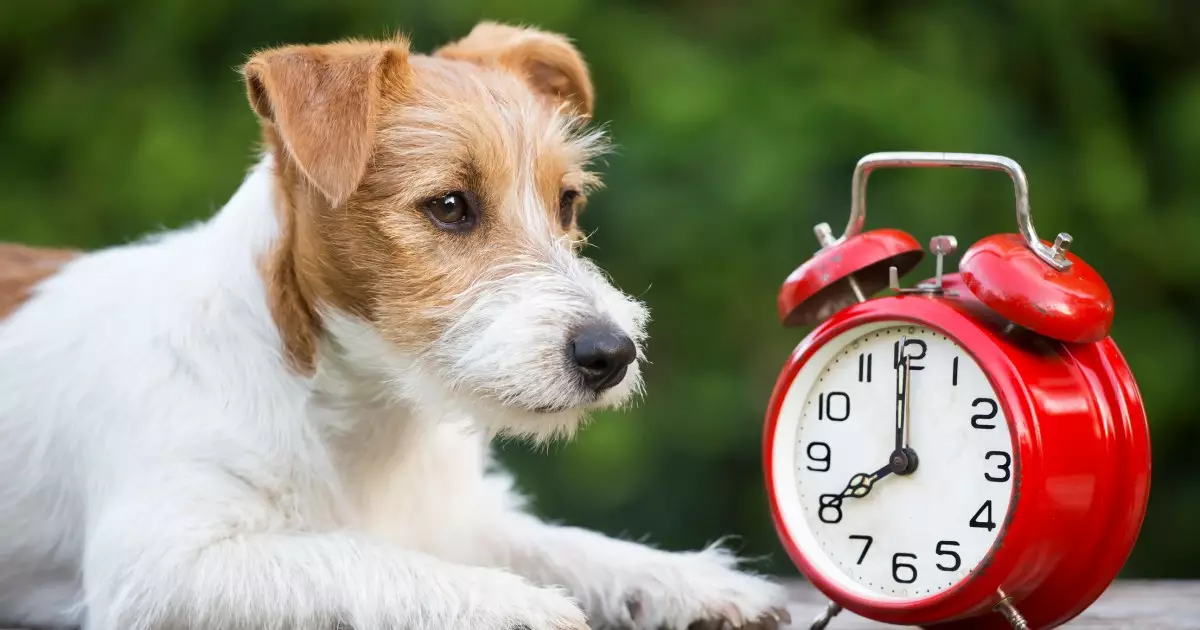As the clock approaches 2:00 a.m. on Sunday, November 3, 2024, many people will relish the extra hour of sleep afforded by the end of Daylight Saving Time (DST). But while humans might luxuriate in a prolonged slumber, canine companions often struggle with the abrupt shift in routines. This article delves into the intricacies of how DST impacts our pets, particularly dogs, emphasizing the differences between human schedules and the natural patterns that govern animal behavior.
Unlike humans, who rely on clocks to dictate our daily schedules, dogs follow an intrinsic circadian rhythm. This biological clock regulates their sleep, eating, and elimination patterns, creating a structured routine that is vital for their overall wellbeing. When Daylight Saving Time comes to an end, the disruption of this routine can be confusing and distressing for dogs. Their daily activities are not aligned with the mechanical tick of the clock, so suddenly changing the hour can have tangible consequences for their mental and physical health.
The Potty Predicament
One of the most immediate challenges upon the shift to standard time involves potty breaks. Many dogs have their bladder scheduled to match their owners’ habits. When an extra hour of sleep tempts their humans to snooze longer, dogs may find themselves bewildered and in discomfort, awaiting their morning relief. A sudden change in routine might lead them to unfortunate accidents indoors, potentially damaging the relationship between pet and owner.
To ease this adjustment, pet owners should consider gradually modifying their morning routines in the days leading up to DST’s conclusion. By shifting the time they take their dogs out by about 15 to 30 minutes each day, owners can help their pets acclimate without overwhelming them. This slow integration can minimize confusion and prevent undesirable indoor accidents.
In addition to potty breaks, mealtimes are another aspect where dogs may experience frustration after the end of DST. If your dog is accustomed to being fed at a specific hour, the hour delay can turn anticipation into agitation. Many dogs express their hunger by begging or engaging in unwanted behaviors, such as chewing on furniture or rummaging through the trash.
Once again, gradual adjustment can help ameliorate this situation. Altering feeding times incrementally before the official time change allows dogs to adapt their hunger cues gently. The goal is to keep them satisfied without the anxiety of an empty dish. Providing meals closer to the shifted hour can help prevent the undesirable consequences of frustration or scavenging.
Managing Separation Anxiety
For many dogs, owners represent the core of their world. As beloved pack members, dogs crave connection and routine. During Daylight Saving Time, they become accustomed to their owners returning home at a consistent hour, often correlated with daylight. With the time change, your arrival may differ, potentially leading to increased anxiety in your dog.
The altered timing may provoke concern, particularly if it occurs while it is already dark outside. This shift can manifest behaviorally; some dogs may react to the anxiety by having accidents or engaging in destructive behaviors. One effective approach to managing this is to create reminders of security. Incorporating interactive toys into their environment or scheduling short outings before you typically return can help ease the adjustment.
Ultimately, the end of Daylight Saving Time can be navigated smoothly for both humans and their canine companions with a little preparation and intentionality. Regularity fosters comfort and stability, which are crucial for a dog’s happiness and mental health. During this transition, it is important for pet owners to be especially vigilant regarding their dog’s behavior and needs.
Supporting your dog with extra attentiveness during this period is essential. Create a comforting environment, invest in engaging toys, or even set aside additional time for snuggles and play. Recognizing and reassuring your furry friend can help mitigate feelings of confusion or stress.
As we approach the extra hour of sleep that Daylight Saving Time offers, it is vital to remember that our pets are not governed by our schedules. By taking the necessary steps to adjust their routines thoughtfully, we can ensure that the transition remains a positive experience for our loyal companions.

